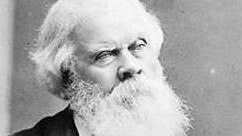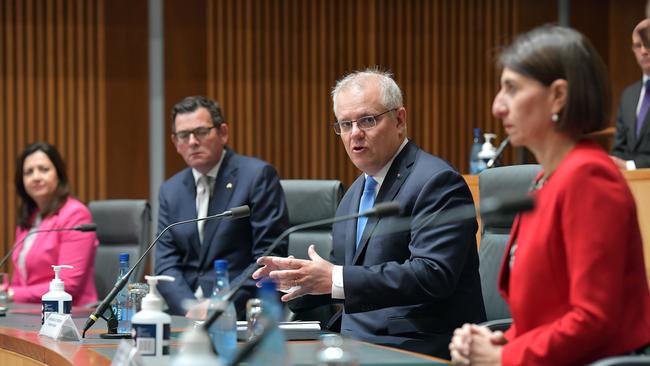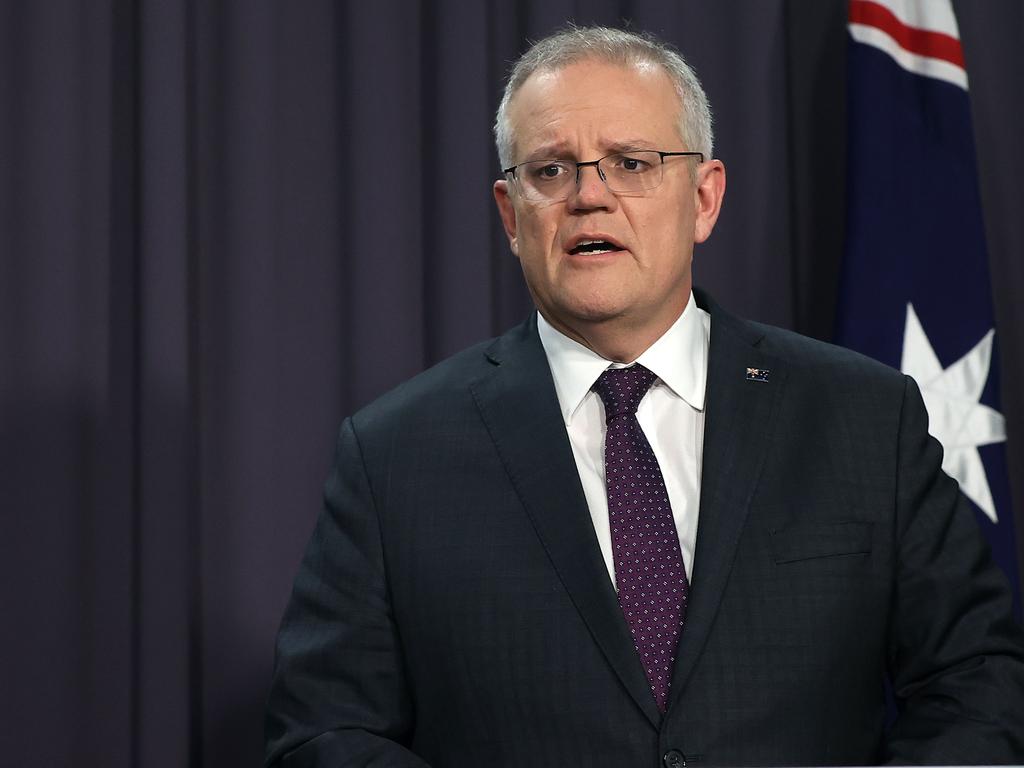
Now, as Covid’s wrecking ball highlights the fragility of the federation’s foundations, Australians might well wonder whether it wasn’t the product of the horribly disobliging Demiurge of the Gnostics instead.
Reading William Coleman’s brilliant new book, Their Fiery Cross of Union: A Retelling of the Creation of the Australian Federation, 1889-1914, which was released last week, will only cement their doubts, while casting fresh light on the origins of the mess we’re in.
Coleman’s intent is clear: it is to demythologise the process that brought the colonies into a federal union, highlighting its moral ambiguities, political failings and flawed legacies.
Issuing neither from strategic necessity nor from popular enthusiasm, the campaign to unite the colonies was fuelled by the hunger for status and power of a burgeoning professional class, which saw itself as leading the institutions of the new commonwealth at home while securing a position as a respected equal in an even greater federation spanning the British Empire worldwide. Already then, those aspirations were underpinned by the belief that progress could be achieved only through regulation – that is, through the construction of a well-ordered society with those professionals firmly in charge.
Driven by their boundless confidence in the law’s ability to solve economic and social problems, federation’s champions therefore had little difficulty in accommodating the demands of the labour movement for a tightly regulated labour market, from which “coloured” workers would be irrevocably excluded, and of the Victorian manufacturers for a heavily protected national market.

The confluence of those forces gave the campaign for federation enormous impetus. But it was hardly unopposed, and it is the great merit of Coleman’s account that it rescues the anti-federation movement from the oblivion to which “victor’s history” has largely consigned it.
Viewed in hindsight, that movement seems doomed to fail. The advocates of federation, bankrolled by the manufacturers who would gain from protection, were much better funded and organised; moreover, they could galvanise sources of support – such as the country towns that resented the overweening dominance of the capital cities – that federation’s opponents found hard to tap. Nor did fortune smile on the opponents’ cause, with one unexpected event after the other depleting their already weakened ranks.
Yet the campaign for federation took no chances. Its leaders loudly professed democracy but, as Coleman forensically demonstrates, they buried it at every turn. Thus, far from being “one of the most gracious laurels of the Federation episode”, as it has so often been deemed to be, the election of the delegates to the Federal Convention of 1897-98 was marred by a voting system that effectively shut out dissenting views, producing a convention less representative, and less effectively deliberative, than the parliaments it sidelined.
It is consequently unsurprising that the Constitution it drafted contained so many vexing anomalies – such as the grafting on to a Westminster system of an exceptionally powerful upper house, leading Alfred Deakin to gloomily predict: “To introduce an American Senate into a British constitution is to destroy both.”
And if the constitutional convention was marred, the crucial referendum of 1899 verged on illegality. This was no ordinary election, whose results could be corrected by later contests; rather, once the Yes vote prevailed, it would lock the former colonies into a constitution nearly as hard to amend as the federation it created was “indissoluble”.
That should have made the referendum’s probity a central concern. However, especially in NSW, whose vote was pivotal, the federation movement managed to remove virtually all the established electoral safeguards, including by prohibiting scrutineers and facilitating “ballot stuffing”. The outcome, highlighted by Coleman’s statistical analysis, was voting patterns that, in today’s world, would readily lead independent monitors to dismiss an election as illegitimate.

Of course, the Yes vote might well have prevailed in an election that was entirely “free and fair”; indeed, Coleman considers that highly likely. What is clear, however, is that the federation inaugurated on January 1, 1901, came tarnished. And compounding its birth defects was the shallowness of the electoral approval it garnered.
In each colony only a minority of those enrolled actually voted in the 1898 referendums, with the Yes vote amounting to a small share of the overall adult population. Even in the much better attended referendums of 1899, for every seven people who voted Yes, nine other eligible voters voted No or not at all. And in no colony did the numbers voting Yes come anywhere near a majority of adults.
As Coleman notes, none of that means “a closer political integration of Australia should never have happened”. There is, nonetheless, a compelling case that “the Federation of 1901 was premature and botched” – “alternative histories were possible; better histories were possible”. If only those paths had been taken, the “buyer’s regret” that subsequently manifested itself with such force might have been avoided, along with some of the nagging problems that have beset our federalism.
Ultimately, however, the value of Coleman’s analysis lies not in contemplating what might have been but in illuminating our society’s enduring features, which made federation possible and which federation then entrenched: features Coleman synthesises as “the mechanicality of Australian commitment to democracy, the weakness of national feeling, the slightness of ideas in its public counsel, the political ascendancy of the professions, and the pre-eminence (in its governance) of the ritualistic, the legalistic, and the bureaucratic”.
Who has not seen those features come to the fore in the current crisis? And as our political class shows itself, once again, to be best at the worst of politics, and worst at its best, who can believe the crisis will mark a fresh start – any more than did the flu pandemic of 1919-20, when the states, having initially agreed to co-ordinate their response, promptly created chaos by each going its own way?
To say that is not to descend into despair. After all, federation and its aftermath highlight not just flaws but also strengths: and none more so than an ability to quietly make the best of what we have, including by reflecting on the past so as to understand the present and improve the future.
That is what Coleman’s book, controversial as it will no doubt be, helps us to do. Buttressed by a formidable analytical and scholarly apparatus, yet dazzlingly written and forcefully argued, it is the perfect contrarian antidote for a time where bodies may be locked down but minds need to be wide open.








Once upon a time, schoolchildren were taught that the coming of Federation in 1901 was the work of providence, whose bounteous hand was guided by an omniscient and benevolent deity.